The Gift of South Dakota
Subscriptions to South Dakota Magazine make great gifts!
Subscribe today — 1 year (6 issues) is just $29!
The Elevator
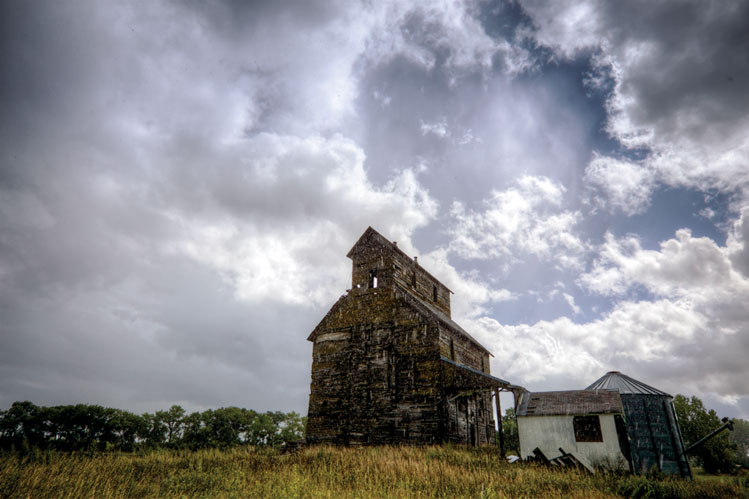 |
| A skeleton of the Rauville Grain Company still attracts attention north of Watertown. |
Dave Goos recalls walking into Lampert Lumber Company in Sioux Falls and buying 9,000 pounds of 20-penny coated sinker nails.
“We were building a new wood crib elevator in Cavour and that’s what we needed,” says Goos, who designed some of America’s last wood structures before concrete and steel grain facilities became the norm.
He has fond memories of the Cavour project and others like it. “They’d already shipped rail carloads of rough lumber to the job site. We would hire local guys — hopefully some young farm boys — and take our foreman and together we would build something that was a key to the economy and the culture of the area.”
What they built has stood the test of time. Grain elevators — some more than 100 feet high and a century old — continue to tower over Cavour and other towns in America’s grain belt. Many wood elevators are still used for grain storage. A few have been repurposed into lodges or homes. Others, though abandoned, are built so solidly that they’ve thwarted all attempts by nature or man to take them down. They represent farm country’s tallest icons of yesteryear, beloved by photographers and painters and every farmer’s son or daughter who ever unloaded a trailer or truck full of grain and then drove home while carefully clutching a handwritten check from the manager.
Some call them the skyscrapers of the prairie or cathedrals of the plains. To farmers, however, they are just The Elevator.
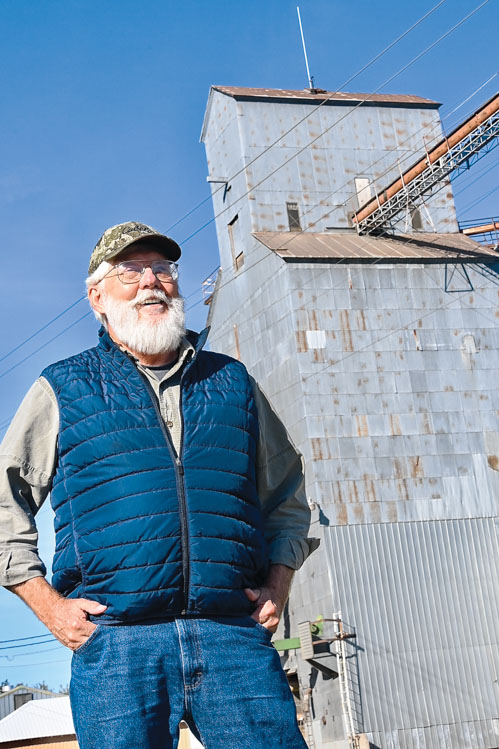 |
| Dave Goos designed classic crib elevators. |
D&W Construction, the company that Goos worked for in the 1980s, still exists on the western outskirts of Sioux Falls. He says he loved the chance to build something that was so vital to a town, and he still relishes the stories that developed from such an unusual and rugged occupation.
Like the day Pete Puterbaugh, “a tough as nails ranch boy from North Dakota,” fell off the elevator at Burke and landed on a lumber pile. “He got busted up pretty badly, but he walked away from the fall,” Goos says. On another occasion, Goos says Puterbaugh saw a badger digging a hole in a pasture. “As Pete told it, he got ahold of the scruff on each side of the badger’s belly and tried to pull it out of the hole, but he said it seemed like the badger ‘turned around inside his own skin’ and came at him, looking like it had two fistfuls of 16-penny nails for claws buzz sawing for his chest. All Pete could do was pick it up and throw it as far away from him as he could and run.”
Goos recalls an occasion when a few of the workers painted a picture of a scantily clad lady atop a new elevator. “It didn’t take long for the phone to ring in the office at D&W,” he says.
At yet another worksite, they were addressing a rat infestation, a common problem for grain facilities. “The manager had read about some powerful sonic device that would drive the rats crazy, so he bought one, wired it to a 2-by-6, plugged it in and shoved it up under the backside of the elevator on a Friday night. On Monday morning he was wondering if it made any difference when the guy who maintained the buses at the local school came and hurriedly asked for every shovel and broom they could spare.”
“My god, do we have rats!” said the bus man.
Goos says elevator projects always drew onlookers, but a job at Jefferson attracted an unexpected crowd. “A tornado had come through and taken down two 36-foot diameter bins. We made a mock foundation in the parking lot and built new bins to go on the old foundations. Then we dropped a cable through the bin top openings so we could hoist them with a crane onto the old foundations. But the day we moved them just happened to be homecoming day and they had a parade going on. People left the parade and brought their lawn chairs to sit along the railroad siding and watch us lift the bins into place. It was the last thing we wanted because we didn’t know if it was going to work.”
Goos studied mechanized agriculture at South Dakota State University and worked for GTA Feeds before joining D&W Construction as a project engineer. His job was to design the elevators.
“One of the first things you’d do is meet with the elevator’s board of directors, which was usually a group of farmers,” he says. “They always farmed and did chores until dark, so you’d be meeting late at night when everybody else was in bed. We would already have the place all measured out and we’d present a design. So often, they didn’t know exactly what they needed, but they trusted us — and we felt the weight of that responsibility because the elevator was such an important part of their community.”
The trust was well-placed. Most of the D&W-built wood elevators still stand. Many still hold grain.
“We still help to repair the old wood elevators,” says Jason Hiemstra, who started with D&W in 1987 when it was transitioning to steel construction. “We’ll still replace the siding or the cribbing. The wood elevators are actually the best way to store grain because the wood absorbs moisture while corrugated metal actually sweats and adds moisture.”
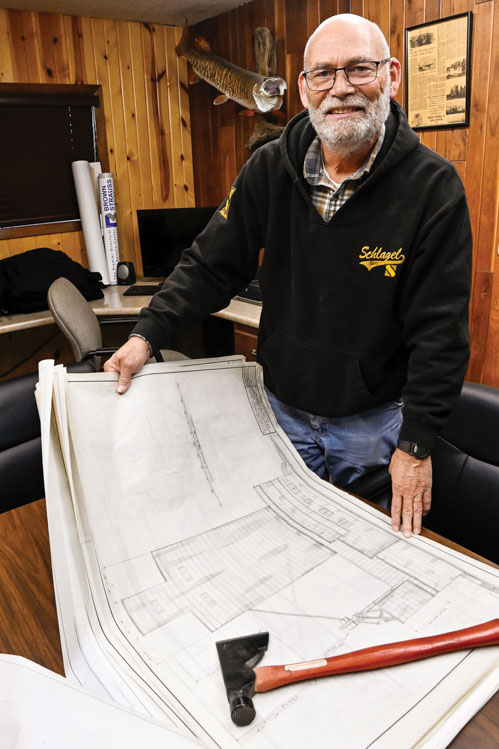 |
| D&W Construction of Sioux Falls built wood crib elevators for decades. Jason Hiemstra, who has blueprints of the jobs and a carpenter's cribbing hatchet, says crews still repair the sturdy structures. |
Hiemstra, now one of the company’s owners, says insurance actuaries are the major threat to wood elevators. “They are starting to kibosh them because they see them as a fire hazard.” Grain dust is explosive; even a spark from an overheated bearing is sometimes enough to create an explosion.
He says old elevators also face problems with everything from mice to worn and frayed electrical wiring. Still, he appreciates Goos’ nostalgia for the elevators. “If I had built them, I’d probably feel the same way.”
An artist’s painting of an old elevator hangs in the entryway at D&W and Hiemstra keeps a cribbing hatchet — the main tool for carpenters who built wood elevators — in his office.
Dale Kelling joined the D&W crew in 1969 and retired as company president in 2011. He says D&W constructed its initial wood elevator in 1955, but the crib-style dates to the late 1800s when grain elevators were first built along the railroad tracks of the Dakotas and neighboring states. “Farmers didn’t want to haul the grain any further than they had to in those days,” he says.
Wood construction required skills that are rare today. “That cribbing hatchet was the weight of a heavy hammer,” Kelling says. “We tried air nailers back in the 1970s, but they wouldn’t pound the nail tight enough to cinch the wood together. That’s where the cribbing hatchet came in.”
He says the main purpose of the hatchet blade was to provide weight for the hammer head. “I don’t know if they actually used it to cut the lumber at one time, but we used hand saws. We bought saws by the dozens before we went to circular saws.”
Cribbed elevators were built by stacking 2-by-4, 2-by-6 and 2-by-8 boards horizontally, like logs in a cabin. The widest boards were used at the bottom, and the narrow 2-by-4s finished off the top. Steel rods were used as corner braces to reinforce the walls by resisting the pressure from the grain inside the bins.
Horses powered the grain-moving systems in the 19th century. Gas engines replaced the horses; electrical motors move the grain today.
In the heyday of small family farms, the grain elevator was the hub of most towns. “That was the gathering place,” Kelling recalls. “Some would come for coffee in the morning or to play cards in the afternoon, especially in the winter.”
Many elevators stocked livestock feeds and medicines, seeds, fertilizer, hardware and other farm supplies. They were also an entry to international grain markets. When farmers sold their grain to the local elevator, they drove away with checks that were hopefully big enough to keep a family on the land for another year.
Family farms are fewer in number, but many have survived even as other institutions deserted rural America. Railroads abandoned most of their tracks. Automobile and farm machinery manufacturers consolidated dealerships. Bishops closed churches. Politicians shuttered schools. Bureaucrats eliminated post offices. Consequently, much rural architecture — church spires, train depots and automotive garages — are disappearing on the Great Plains. Wood grain elevators are also fewer in number, but they are outlasting the other structures.
A few have even been repurposed. The Wik family converted a Faulk County elevator near Wecota into a private home. In the Gregory County town of Herrick, a 1907 elevator serves as a local bar and grill called Run of the Mill.
Jenna Carlson Dietmeier, interim director of South Dakota’s State Historic Preservation Office in Pierre, says grain elevators may not appear historically significant to people unaware of the heritage and unique construction. “They are not often seen as exemplary architecture. They are very utilitarian, and they don’t always stand out to the untrained eye. But they definitely tell the story of South Dakota’s agricultural history, and they are worthy of preservation.”
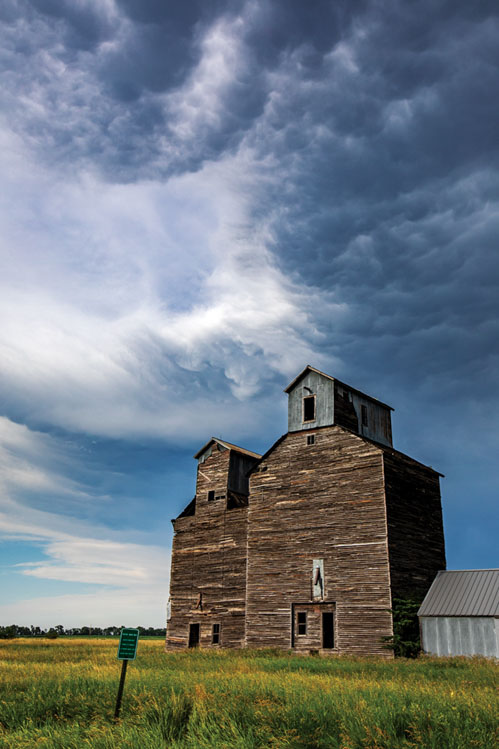 |
| A wood crib elevator is one of the few remaining structures in Esmond, a Kingsbury County ghost town. |
Carlson Dietmeier’s office is doing county-wide surveys of buildings that qualify for the National Register of Historic Places. “There are multiple grain elevators that are eligible,” she says. However, many exist in small towns where it’s difficult to find a new use. Some sit alone on the prairie because, thanks to their sturdy crib-style construction, they are the last structure standing.
Neighboring states’ historians are also eyeing elevators. The Montana Preservation Alliance has embarked on a major study of the issue, hoping to not only frame the problem nationally but to also develop models for repurposing vacant elevators.
Bruce Selyem started the Country Grain Elevator Historical Society in Bozeman, Montana, in 1995. He and his wife Barbara research and photograph old elevators; they hope to someday create a museum-quality interpretive site in an old grain facility.
Last year the Alliance for Historic Wyoming developed a tour of historic agricultural buildings that are typically off-limits to the public. On the outskirts of Cheyenne, Wyoming, entrepreneurs are converting a century-old wood elevator into a bar and entertainment center.
North of the U.S. and Canadian border, preservationists in Saskatchewan were alarmed to discover that 94 percent of their province’s historic grain elevators have disappeared. Government officials counted 2,878 elevators in a 1962 study; today they estimate there are less than 180, though efforts are now underway to save some.
Carlson Dietmeier, the preservation officer in Pierre, says 133 elevator properties have been identified in South Dakota’s recent Cultural Resource Geographic Research Information Display database. She believes there may be additional structures not yet surveyed or recorded. Fifty-five of the 133 were recorded as being eligible for inclusion on the National Register of Historic Places.
Six are already listed. They include the Herrick elevator which has been converted to a lodge; an elevator on the Barber farm near Lily; an elevator on the Lyons property in Lake County; two elevators at the Sexauer Seed Company in Brookings; and Central Dakota Flouring Mill in Arlington.
“The elevator and the local restaurant were the two hubs of activity in a small farm town,” says Dave Goos, the engineer who helped to build them in the 1980s. “If you wanted to know what was going on, that’s where you went.”
Farmers and ranchers often laud the importance of land by noting that “God isn’t making any more of it.” The same might be said of wood cribbed grain elevators.
While the grain elevators outlasted churches and other iconic rural buildings because of their ridiculously strong construction, even 9,000 pounds of nails isn’t enough to ward off fire worries, insurance actuaries and the vagaries of nature and time.
Editor’s Note: This story is revised from the March/April 2024 issue of South Dakota Magazine. To order or to subscribe, call (800) 456-5117.


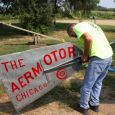







Comments